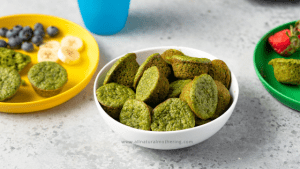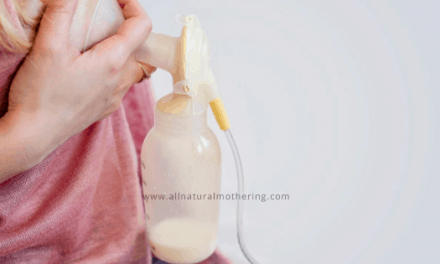Have you ever spent hours pumping your precious breastmilk only to leave it on the counter and forget to put it in the fridge or in the freezer?
If that sounds like you, don’t beat yourself. It happens to the best of us.
It has happened to me a couple of times, and I honestly cried when I found out that my breastmilk has gone bad and I could no longer feed it to my baby.
It is not unusual for moms to get carried away with the everyday chaos that they forgot to store breastmilk properly. When this happens though, you need to be careful while investigating pumped milk before feeding the baby.
Freshly pumped milk can stay out up to 3 hours in room temperature. When the temperature is hot, however, breastmilk can turn bad quickly.
In such cases, moms need to know how to find out if their breastmilk has gone bad.
What Happens When You Feed Your Baby Bad Breastmilk?
Your Baby May Not Eat:
Babies are smart, and they recognize even subtle changes in breastmilk.
Breastmilk that has gone bad has a sour taste to it, and your baby might not like the taste of it.
If your baby is making a big fuss and not taking the milk, then check for the signs that I will discuss below to see if the breastmilk is spoilt.
Your Baby Spit Up or Vomit :
A baby who had bad breastmilk can have mild tummy issues, and they might spit up or vomit. If you notice that your baby is excessively vomiting that it might cause dehydration, call your doctor immediately and seek advice.
Fever or Diarrhea:
Most of the time your baby should be fine if they accidentally consume some spoilt breastmilk. But, in rare cases, if the breastmilk was not pumped in a hygienic way to start with, then babies can get a fever or even Diahrea.
Always keep an eye on your baby and talk to your doctor about any unusual symptoms.
Severe Infections (that can cause death):
Rarely, giving baby contaminated breastmilk can cause severe infections that can even cause death. There was one case where a premature infant died due to the intake of expressed milk which was contaminated with Cronobacter Sakazakii. It was found that the mother has been using a breast pump that was not sanitized properly and the deadly bacteria was formed in the valve of the breast pump.
After this reported incident CDC issues new rules for washing pump parts. I know there are many breastfeeding that suggest putting the used pump parts in a ziploc and storing it in the fridge between pumping sessions. The new guidelines about washing pump parts after every session might suck for some of you. When you are pumping more than 8 times a day, it can be very tiring to stand and wash pump parts after each use.
May be some of you might end up buying more spare parts, may be some of you can get help from a partner for washing the parts. No matter what you decide , please do keep in mind that practicing good hygiene is very important when it comes to pumping breast milk and take a ground that works for your family.
Breast Milk Pumping Guidelines:
I’m sure none of you would like a situation where you open your frozen breast milk only to know that it is no more good for your baby
We all feel the pain when we have to pour our precious milk over the drain.
Even worse, no parent would even dream of feeding their child contaminated breast milk.
Pumping properly, following breast milk storing and thawing guidelines can prevent breast milk from going bad.
Wash Hands Before Pumping:
One of the most common reasons for breast milk spoilage is cross contamination. Cross-contamination occurs when you do not wash your hands properly before handling breast pump parts while pumping.
Wash your hands with soap and rub your hands (palm to palm) for 20 seconds before every pumping session.
Sanitize Breast Pump :
If you are using the breast pump for the first time, make sure to wash it with soapy water, rinse them thoroughly under running water and air dry them. After every pumping session, make sure to rinse every part of the pump.
If you are washing pump parts in a kitchen sink, do not put the pieces directly in the sink. Use a dedicated bowl, place your pump in it. Also, invest in cleaning brush that will get inside the nook and corner of the parts and get them clean.
I also recommend getting a separate drying rack like this one, to air dry pump parts.
Once or twice a week, do sterilize the pump parts by placing them in boiling water(in a sauce pan) for 10 minutes or using a steam sterilizer like this one.
Breastmilk Storage Guidelines:
Now that you have expressed ‘liquid gold’ , it needs to be stored properly. Keep in mind these main points while storing expressed breast milk.
Choose The Right Containers:
Glass bottles with a tight, secure lid are great to store breast milk. However, due to storage space constraints, many opt for plastic (BPA Free) storage bags specifically designed for breastmilk storage.
Don’t use thin plastic bags or zip lock bags that you would use for household storage; they might tear and leak breast milk.
Make sure the bags and bottles are sealed tight. When storing breast milk, you should also note down the date and time when the milk was expressed and use a label or a marker to put that in the bottle (or bag)
Store in Constant Temperature:
Remember to always store breast milk at the back of the fridge or freezer. It is advised not to store breast milk near the front door as there will be temperature fluctuations when you open and close the door often.
Always check your stored breast milk if there was a power outage and discard the milk if needed.
Breast Milk Usage Guidelines:
There is a definite time frame within which you should use up pumped milk. The time frame varies if the milk was freshly pumped or stored in the fridge or freezer.
For example, freshly pumped milk can stay good for 6 – 8 hours at room temperature. If the temperature is higher, then it stays good upto 3 or 4 hours.
Breast milk stored in the fridge should be used within 3 – 5 days and when stored in the freezer it can be good for 6 months.
Here is a detailed post on how long you can keep breastmilk out, and in the fridge or freezer.
Related : How Long Can Breast Milk Stay Out(Before It Goes Bad)?
Signs Breast Milk Has Gone Bad:
If you are religiously following the above guidelines, then you can lower the chances of breast milk contamination. However, to be safe, it is better to always check the milk for signs of spoilage before feeding it to your baby.
Here are the few checks that you can do to identify spoiled breast milk.
1.Taste:
According to Healthline, breast milk is compared to taste like ‘heavily sweetened almond milk.’ Breast milk tastes sweeter than cow’s milk.
The taste of the breast milk can also differ depending on the mother’s diet.
However, spoiled breast milk will have a very distinct sour taste ( just like bad cow’s milk).
2. Smell:
Ever smelt breast milk? What does it smell like for you? I ask because mine has felt different at different phases. Sometimes it smells sweet; sometimes it has no smell at all.
Some mothers even complain that their breast milk smells funny – like soapy. This could be because of excess lipase.
Lipase is an enzyme that is present in mother’s milk; it helps break down the fats in the milk. When pumped milk sits out or in the fridge, there could be excessive lipase activity ( break down of fats) which can make breast milk smell soapy.
It is perfectly OK to feed this milk to your baby; however, some babies refuse to eat it because of the weird taste.
If your milk doesn’t have a soapy smell but smells rotten and foul, taste a little to be sure if the breast milk has gone bad.
3.Consistency:
It is normal for breast milk to separate into layers while stored away. This is because the fat separates, the richer hindmilk rises to the top and the thinner foremilk settles at the bottom.
However, the thawed milk should mix together when swirled. If you still notice any lumps or curdling, then your milk is surely gone bad.
Let’s Wrap Up:
Breast milk is the best food for your baby. So many moms out there, spend all their time and energy pumping breast milk because they want the best for their baby.
Pumping hygienically, storing in the right container and using the breast milk within the time frame recommended will all ensure that your hard work pays off.
If for any reason, you have doubts on the way you handled pump parts, or on how the milk was stored, it is always a good practice to do a quick ‘sniff test’ or taste to find whether the milk is still good for the baby.
Follow the breast milk pumping and storing guidelines, and remember to check for the 3 signs before you feed your baby.

If you are a breastfeeding mom, you might be interested in learning more about nursing your baby. This online breastfeeding class will teach you A to Z about breastfeeding for only 19$.
-
Help! How Long Can Breast Milk Stay Out (Before Going Bad?)
-
Fore Milk Hind Milk Imbalance- What is It? and How To Fix It?
-
How To Increase Milk Supply While Pumping (10 Ideas that Work!)













Both my hospital and ALL of my breast milk storage bags say room temp breast milk is good for up to 8 hrs.
Yes! I too say the same. Freshly pumped milk is good for 6 -8 hours at room temperature. but if you live in hotter area, then it lasts for about 3-4 hours.
Is there a test out there to find out if your breast milk is spoiled? Mine has no smell at all and even when I left it out for 2 weeks on the kitchen table it has no smell and it doesn’t clump up. My freezer died on me i don’t know for how long. When i notice it some of my breast milk has been thawed out, but was still cold to the touch. I Have re-freeze it, but I want to know if there is a test I can test it to see if it spoils or not before I feed my baby and it doesn’t have a smell.
I can’t think of any test you can do to find out if your milk is bad. Other than the sniff, taste and consistency test. I will stick to the timelines suggested and would assume the milk is bad if it was sitting for a long time. Another thing I can suggest is to take some of your breastmilk, heat it up in a sauce pan and see if it curdles when heated. If it doesn’t its probably good.